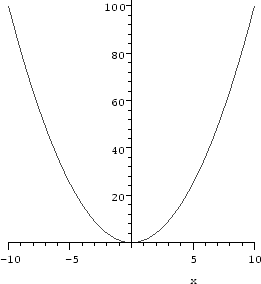Ex.

Ex.

The Second Factor in the finding the end behaviors is whether or not the leading coefficient is positive or if it is negative. this determines whether as X approaches infinty if Y will also approach infinty, or if it will approach negative infinty, and whether or not as -X approaches infinty if Y will do the same or approach positive infinty. This can be summed up graphically in the following way:
If leading coefficient of
If the leading coefficient of  is positive, and N is even
is positive, and N is even

The same goes for odd functions, so if the leading coefficient of
If the leading coefficient of  is positive, and N is odd
is positive, and N is odd


No comments:
Post a Comment